#hawksbill turtle
Text


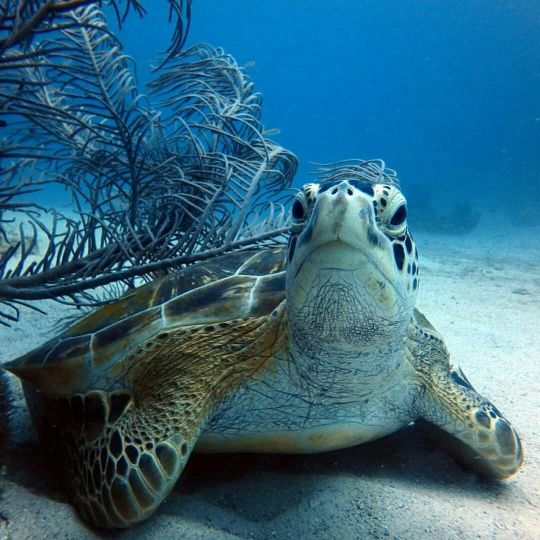
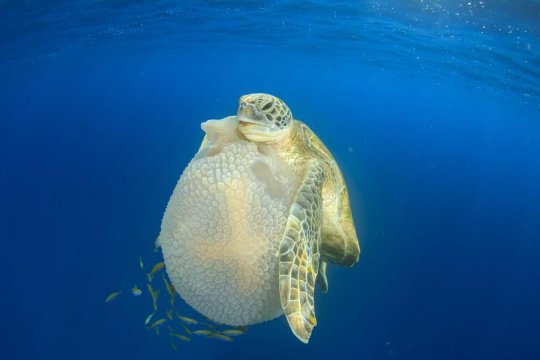

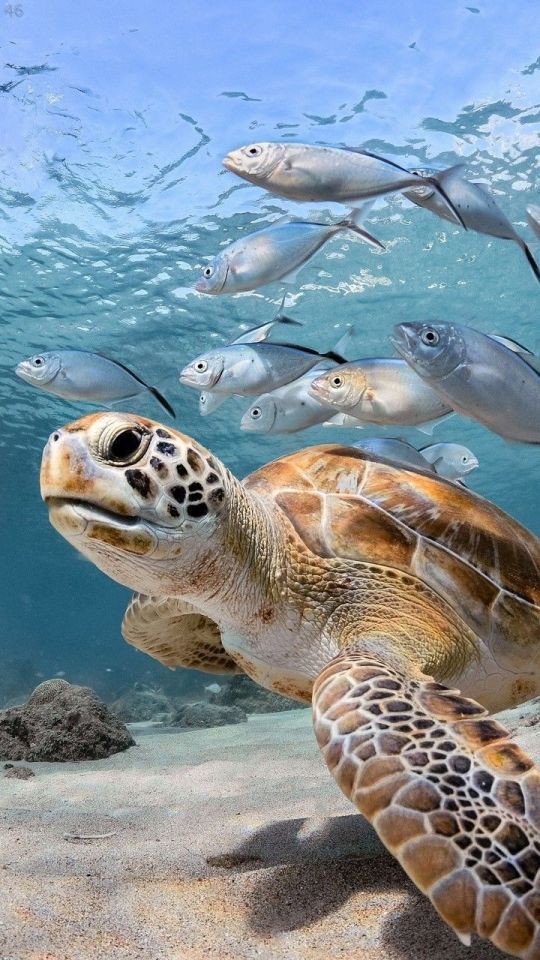
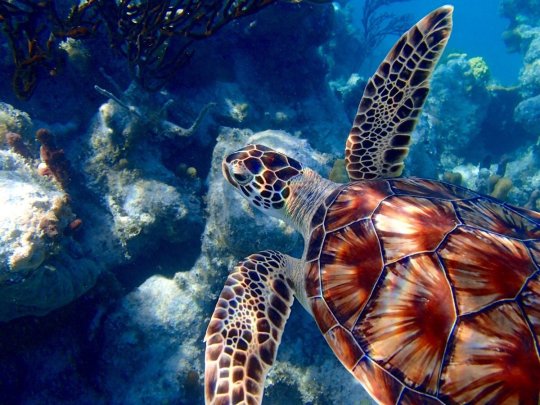



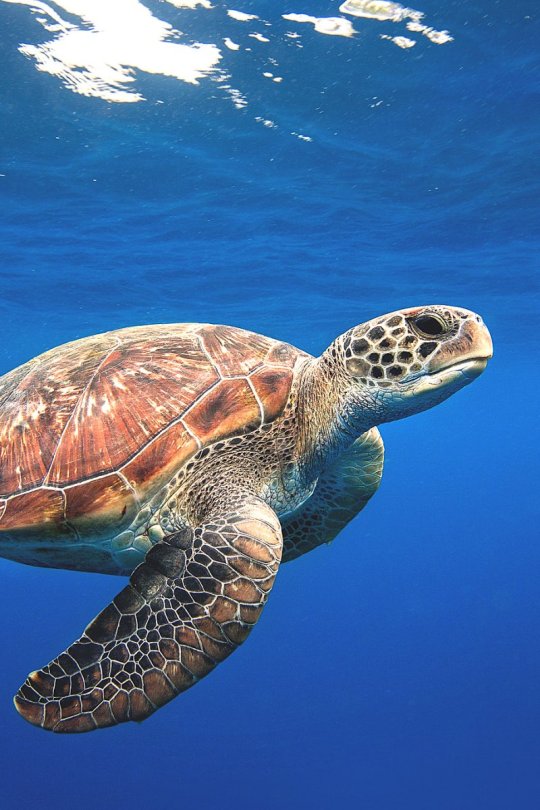



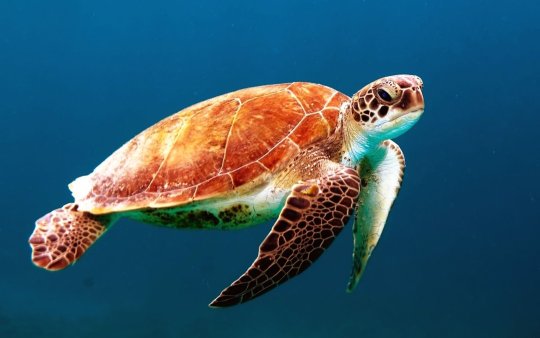
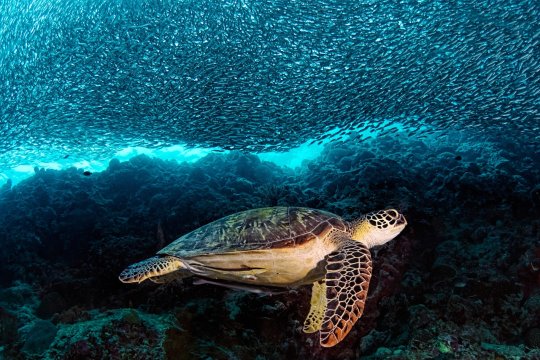
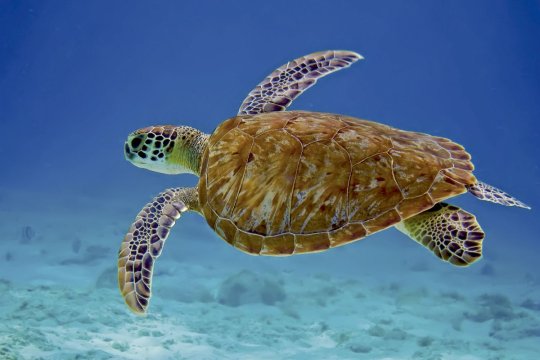
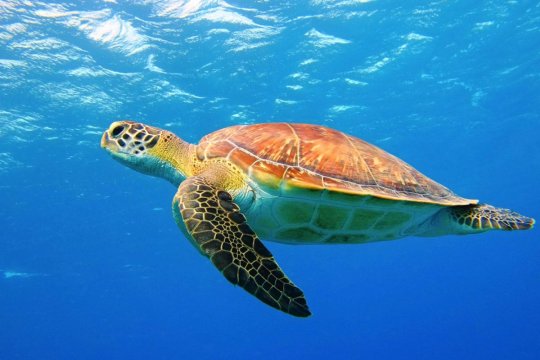
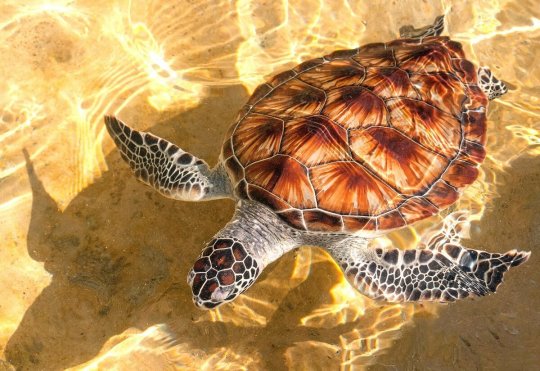
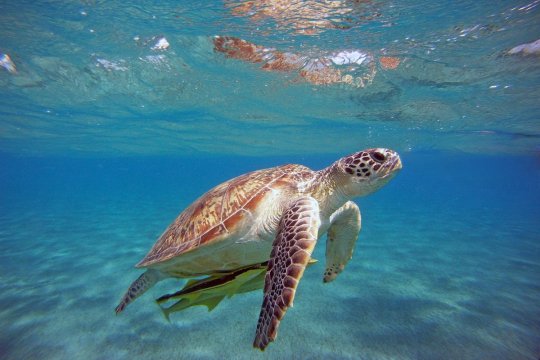
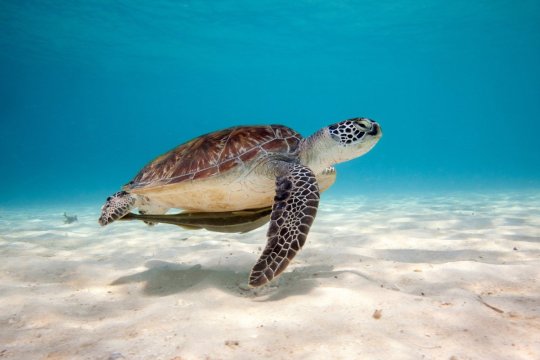
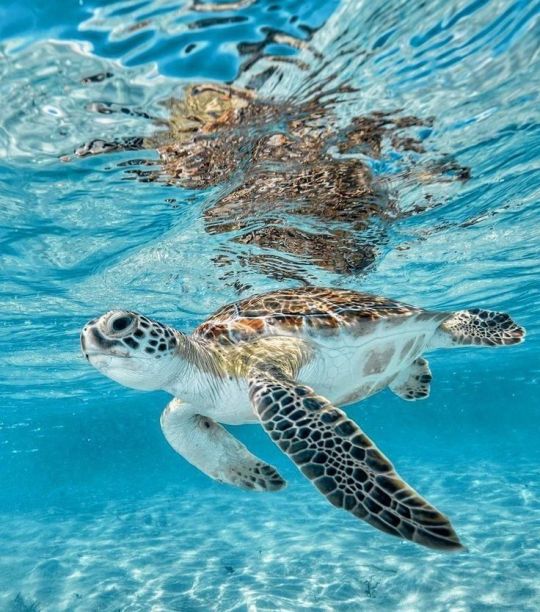
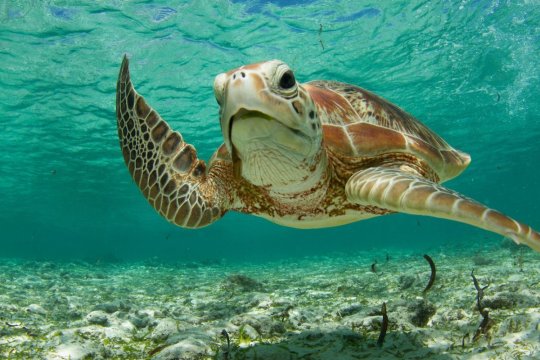
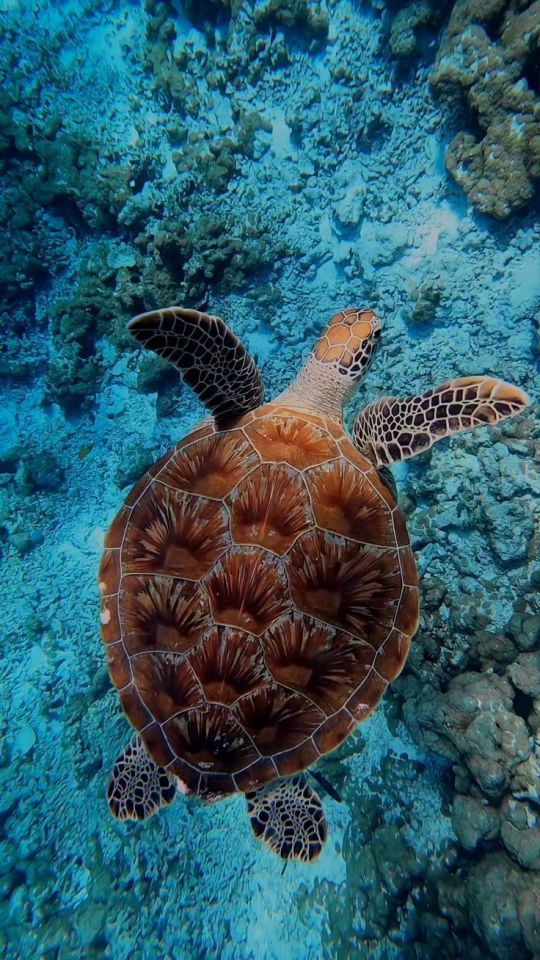
Бисса (лат. Eretmochelys imbricata) — один из редких видов морских черепах, которому грозит полное исчезновение. По внешнему виду ее можно перепутать с зеленой черепахой, от которой бисса отличается только меньшими размерами и весом: взрослая особь имеет длину тела от 60 до 90 см при массе около 45-55 кг. Панцирь биссы сверху коричневый �� красивым желто-пятнистым рисунком и имеет сердцевидную форму. Ещё одна особенность внешнего вида - заострённый, похожий на клюв кончик морды.
Второе название биссы — настоящая каретта — означает, что именно эта черепаха дает самые ценные, "настоящие" роговые пластинки, из которых изготавливают различные сувениры: гребни, шкатулки и прочие мелочи. Очень жаль, что любовь человечества ко всяким безделушкам привела вид к такому плачевному состоянию. Впрочем, мясо биссы тоже ценится в некоторых странах. Разумеется, нелегально, так как настоящая карета уже давно внесена в Международную Красную Книгу и находится под охраной различных организаций. При этом гурманов вовсе не пугает тот факт, что деликатес может оказаться ядовитым из-за пищи, которую сама черепаха ела накануне.
Встретить ее можно в Атлантическом и Тихом океанах: ареал настоящей каретты простирается от умеренных вод северного полушария до умеренных вод южного. Вот только гнездится бисса исключительно в тропических широтах. Населяет преимущественно скалистое мелководье, коралловые рифы, лагуны и заливы с мангровыми берегами. Мелкие прибрежные воды, заливы и устья рек с илистым или песчаным дном — обычные места обитания биссы. Она держится чаще в тех местах, где подводной растительности мало. Настоящие каретты всеядны, но отдают предпочтение животной пище- их рацион составляют бентосные беспозвоночные, медузы, анемоны и морские губки, причем только определенных видов, а некоторые из них и вовсе ядовиты для других существ.
Еще один интересный факт этот вид черепах способен светиться в темноте.
The hawksbill turtle (Latin Eretmochelys imbricata) is one of the rare species of sea turtles that is threatened with complete extinction. In appearance, it can be confused with the green turtle, from which the hawksbill differs only in its smaller size and weight: an adult has a body length of 60 to 90 cm with a weight of about 45-55 kg. The hawksbill shell is brown on top with a beautiful yellow-spotted pattern and has a heart-shaped shape. Another feature of its appearance is the pointed, beak-like tip of the muzzle.
The second name of the hawksbill turtle is the real caretta, which means that this particular turtle produces the most valuable, "real" horn plates, from which various souvenirs are made: combs, boxes and other little things. It is a pity that humanity's love for all sorts of trinkets has led the species to such a deplorable state. However, hawksbill meat is also valued in some countries. Of course, illegally, since the real carriage turtle has long been included in the International Red Book and is protected by various organizations. At the same time, gourmets are not at all afraid of the fact that the delicacy may be poisonous due to the food that the turtle itself ate the day before.
You can meet it in the Atlantic and Pacific oceans: the range of the real carriage turtle extends from the temperate waters of the northern hemisphere to the temperate waters of the southern. But the hawksbill nests exclusively in tropical latitudes. It inhabits mainly rocky shallow waters, coral reefs, lagoons and bays with mangrove shores. Shallow coastal waters, bays and river mouths with a muddy or sandy bottom are the usual habitats of the hawksbill. It is more often found in places where there is little underwater vegetation. True carettas are omnivorous, but prefer animal food - their diet consists of benthic invertebrates, jellyfish, anemones and sea sponges, but only of certain species, and some of them are completely poisonous to other creatures.
Another interesting fact is that this species of turtles can glow in the dark.
Источник:://more.fandom.com/ru/wiki/Бисса,/ornella.club/15248-morskaja-cherepaha-bissa.html,/zoo-ekzo.ru/node/6163, //www. zoopicture.ru/bissa/,animals.pibig.info/6018-cherepaha-karetta.html, /ru.pinterest.com/pin/68737846851/.
#video#nature video#marine life#nature#ocean view#aquatic animals#sea turtle#hawksbill turtle#Real Caretta Turtle#ocean#reef#fish#sand#wonderful#nature aesthetic#видео#природнаякрасота#природа#океан#черепаха#Бисса#настоящая каретта#риф#песок#рыбы
203 notes
·
View notes
Photo

Hawksbill Turtle
#Marine life#Sea Life#Ocean life#Sea turtle#Hawksbill turtle#SCUBA#Diving#Underwater photography#SCUBA divers#Turtle
76 notes
·
View notes
Text
my rottmnt oc


#rottmnt#rottmnt oc#oc#my art#art#traditional art#teenage mutant ninja turtles#rise of the teenage mutant ninja turtles#hawksbill turtle#Damian the turtle
11 notes
·
View notes
Text



A Hawksbill turtle for #vulnerableanimalsweek last year! <3
2 notes
·
View notes
Text



Hawksbill turtles, like all sea turtles, return to the beach where they hatched to lay their eggs.
4 notes
·
View notes
Text

Home
I painted this last year. It was inspired by my girlfriend's telling me about her people's myths from eons ago of a giant turtle depicting the known world. I set out to challenge myself. My idea initially was to have it covered in barnacles and algae. At that scale they'd be pretty microscopic and would make it look filthy and scary. I chose to keep it pristine and friendly looking.
#turtle#ocean#island#sardines#blue whale#shark#hawksbill turtle#painting#digital art#digital painting#illustration#wildlife#kaiju
12 notes
·
View notes
Text

New OC/scaliesona who this?
#ocs#krita#digital art#digital artist#artists on tumblr#turtles#hawksbill turtle#rottmnt#unpause rottmnt#unpause rise of the tmnt
6 notes
·
View notes
Text

Hawksbill turtles such as this example at the Old Hegg Turtle Sanctuary on Bequia Island, Saint Vincent and the Grenadines, have been hunted almost to extinction for their meat, eggs, and shells.
#caribbean#caribbean islands#hawksbill turtle#Old Hegg Turtle Sanctuary#bequia#Saint Vincent and the Grenadines
1 note
·
View note
Text

0 notes
Text



Happy world turtle day 🐢☀️
193 notes
·
View notes
Text
🐢Daily Sea Turtle Fact:🐢
Hawksbill Sea Turtle: Hawksbill sea turtles inhabit the tropical and sub-tropical waters of all of the world’s major oceans. Hawksbills get their name from their unique beak-like mouth, which resembles that of a hawk and is perfect for finding food sources in hard-to-reach cracks and crevices. They are the only species of sea turtle that can survive on a diet consisting mainly of sponges. Hawksbill turtles play a key role in the function of marine ecosystems.


#hawksbill sea turtle#sea turtle#sea turtle post#facts about sea turtles#sea turtle fact#daily sea turtle#daily sea turtle fact#marine reptile#marine animals#marine#marine biology#marine life#marine life blog#ocean animal#ocean life#ocean life blog#ocean#advocacy for marine life#marine life advocate#feelin turtley#turtle turtle#respect the locals
37 notes
·
View notes
Text

Facts for my sea turtle enjoyers
#eddie infodumps#marine biology#marine animals#marine science#marine life#biology#marine#ocean#animals#eddie in the ocean#sea turtles#green sea turtle#leatherback sea turtle#hawksbill sea turtle
144 notes
·
View notes
Text






Pier is that you??? Ohmygosh I think I met Pier irl today
7 notes
·
View notes
Text



flag id: two flags with 5 stripes. the left flag's stripes are green-white, dark golden brown, green-black, red-brown, and green-white. the right flag's stripes are green-white, dark golden brown, red-brown, green-black, and green-white.
in the center of each flag is a white circle, a bit taller than 3 of the stripes, with a black symbol in its center. the left flag's circle contains the therian symbol, which is a circle and triangle placed on top of each other and intertwining with a small horizontal line in the center, not touching the circle and triangle. the right flag's circle contains the kin symbol, a seven-pointed ‘cursive’ star, is within the circle. end id.
banner id: a 1500x150 teal banner with the words ‘please read my dni before interacting’ in large white text in the center. end id.
hawksbill sea turtle therian and otherkin flags for anon!
they use the same colors, they're just slightly rearranged so that the flags are still distinct when the symbols are removed.
dni link
#hawksbill sea turtle therian#hawksbill sea turtle otherkin#hawksbill sea turtle kin#therian flag#kin flag#otherkin flag#alterhuman flag#alterhuman#my flags#new flag#liom flag#liom
21 notes
·
View notes
Text

Hawksbill Sea Turtle off the coast of Mayotte in the Indian Ocean, off the north-west coast of Madagascar.
Photographer: Serge Melesan
National Geographic Traveller Photography Awards
#serge melesan#photographer#national geographic traveller photography awards#hawksbill sea turtle#turtle#reptile#nature#mayotte#indian ocean#madagascar
39 notes
·
View notes
Text
Excerpt from this story from Kaua'i Now:
The developer of a controversial proposed Ka‘ū residential and commercial community on the Big Island will have to wait to find out if it will be approved for a special management area use permit to move forward with project — or if it will be considered at all — following a special meeting Monday of the Hawai‘i County Windward Planning Commission in Hilo.
Commissioners granted standing for petitions in a contested case hearing filed by the Center for Biological Diversity and ‘Iewe Hanau o Ka ‘Āina. Both organizations object to the special use permit sought by Black Sand Beach LLC to develop Punalu‘u Village on 147 acres around Punalu‘u Black Sand Beach Park, about 6 miles southwest of Pāhala.
The proposed development, which could cost up to $350 million, has run up against a wall of opposition from Ka‘ū community members, residents from elsewhere throughout Hawai‘i and even people from the mainland who say it not only threatens the environment, it would desecrate cultural sites.
There also are concerns about the cost of living increasing because of the development, outside influence in the community, destruction of the pristine Punalu‘u coastline, threat of wildfire because of the state of the former resort buildings, larger numbers of people in the area and loss of a way of life along with historical and generational knowledge, among others.
The Center for Biological Diversity has a legally protected interest in the survival and recovery of endangered and threatened species and their habitats.
Members, some of whom are descendants of Native Hawaiians who inhabited the Hawaiian Islands prior to 1778, have a vested interest in the species, habitat and natural and cultural environment at Punalu‘u, which would be impacted by the proposed development.
The spike in how many people are in Punalu‘u and water quality issues also will impact the animal and plant life there. ‘Iewe Hanau o Ka ‘Āina, which also has members descended from Native Hawaiians who inhabited the islands before 1778, is concerned about the endangered and threatened species of the area.
That includes the threatened nēnē (Hawaiian goose) that hang out on the golf course, endangered green sea turtles and critically endangered hawksbill turtles that nest at Punalu‘u.
#Black Sand Beach LLC#Black Sand Beach LLC to develop Punalu‘u Village#Hawai'i#green sea turtles#hawksbill turtles
7 notes
·
View notes